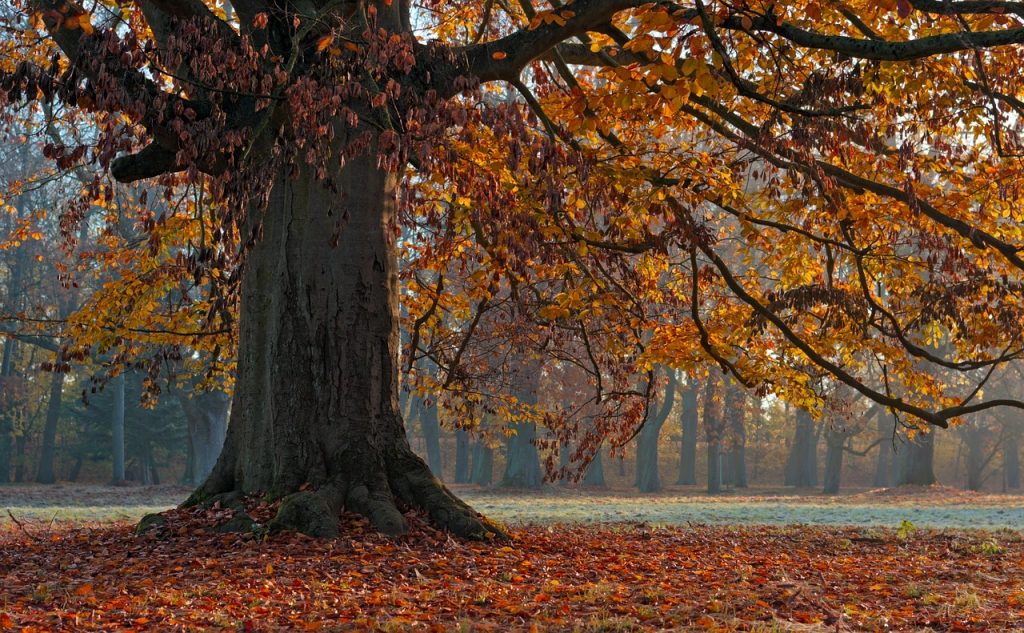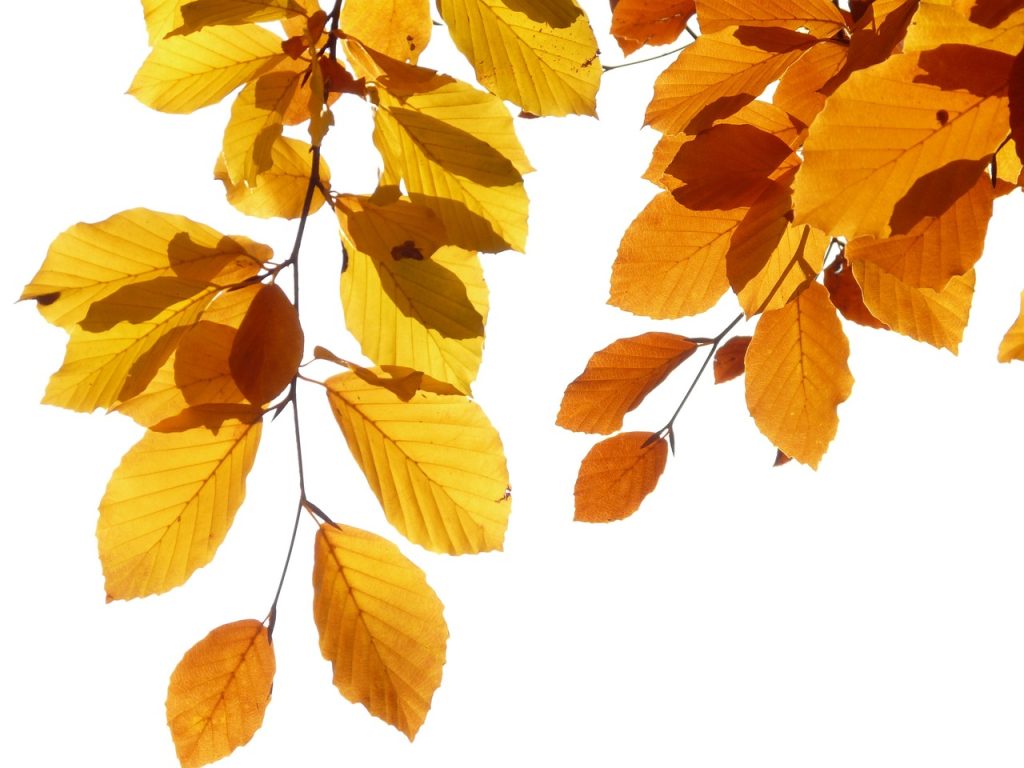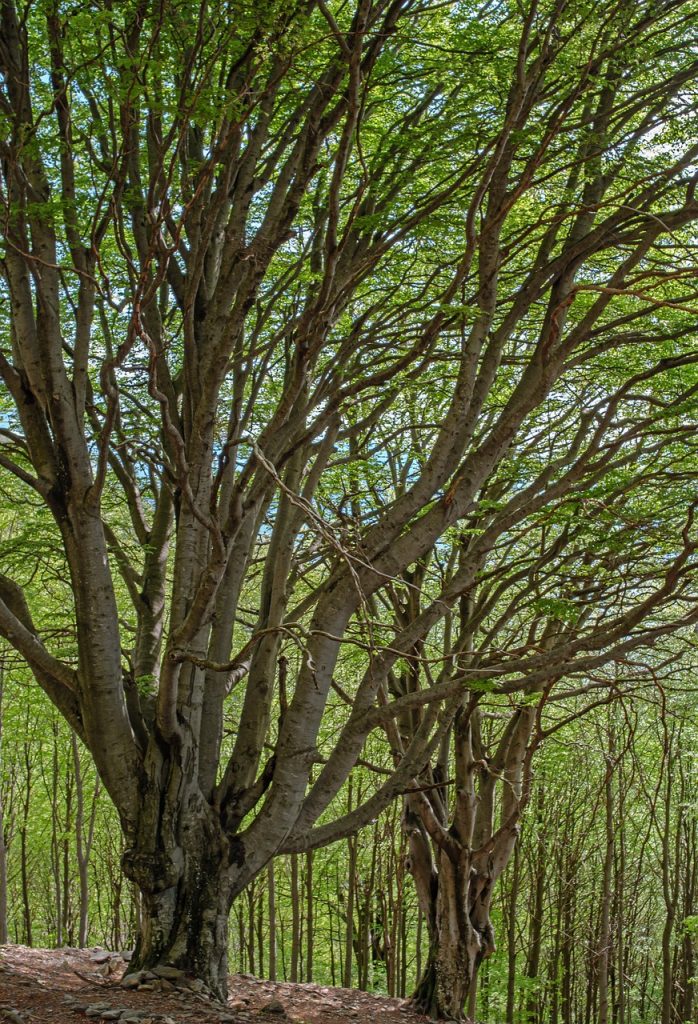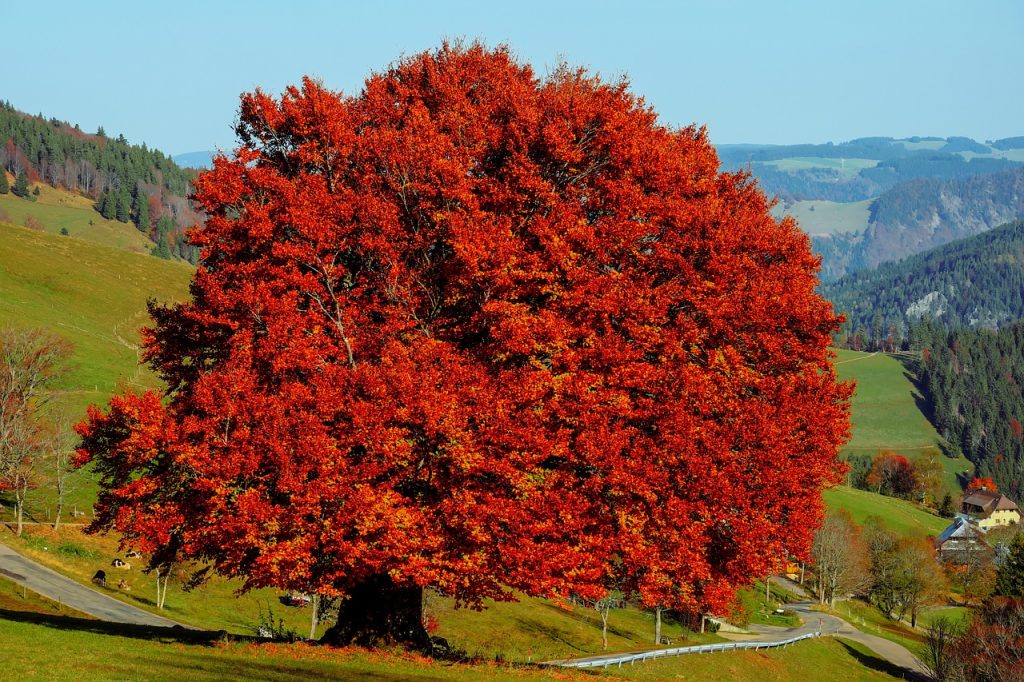European Beech (Fagus sylvatica)
The European Beech, Fagus sylvatica, is a majestic deciduous tree native to Europe. It thrives in temperate climates and is commonly found in forests, parks, and large gardens. This tree can reach impressive heights of 30 to 40 meters (98 to 130 feet) with a broad, rounded crown that creates dense shade. The smooth, gray bark and stately appearance make the European Beech a popular ornamental and forest tree.
The leaves of the European Beech are elliptical, dark green, and have a glossy appearance. In autumn, they turn a golden-brown color, creating a striking display before falling. The tree produces small, inconspicuous flowers in the spring, followed by triangular nuts, known as beechnuts, which are encased in spiky husks. These nuts serve as a vital food source for wildlife, including birds, squirrels, and deer.

The European Beech prefers well-drained, fertile soils and can tolerate a range of soil types, though it does not thrive in waterlogged conditions. It is relatively shade-tolerant and often dominates in mixed woodlands, forming dense canopies that limit the growth of understory plants. This tree is long-lived, often reaching 150 to 300 years, with some specimens living even longer.
The wood of the European Beech is hard, strong, and fine-grained, making it valuable for furniture, flooring, and tool handles. In forestry, it is prized for its high-quality timber. Beech forests also play a crucial ecological role, supporting a wide range of plant and animal species and contributing to soil health through leaf litter decomposition.
The European Beech has cultural significance as well, symbolizing knowledge, longevity, and protection in various European traditions. Its impressive stature and longevity make it a symbol of strength and endurance in the natural world.

Scientific Classification of European Beech
| Category | Details |
|---|---|
| Kingdom | Plantae |
| Clade | Angiosperms |
| Clade | Eudicots |
| Order | Fagales |
| Family | Fagaceae |
| Genus | Fagus |
| Scientific Name | Fagus sylvatica |


Quick Information
| Category | Details |
|---|---|
| Plant Type | Deciduous tree |
| Identification | Height: Typically 30 to 40 meters (98 to 130 feet) tall Leaves: Elliptical, glossy, dark green leaves, 4-9 cm long; turn golden-brown in autumn Stem: Smooth, gray bark Flowers: Small, inconspicuous; appear in spring Roots: Extensive, shallow root system Growth Habit: Broad, rounded crown Crown: Dense and spreading |
| Distribution | Native to Europe; widely found in temperate regions |
| Habitat | Prefers well-drained, fertile soils; commonly found in mixed woodlands, parks, and gardens |
| USDA Hardiness Zone | 4 through 7 |
| Growth Rate | Moderate; grows about 30-60 cm (12-24 inches) per year |
| Lifespan | Long-lived, typically 150 to 300 years, with some specimens living even longer |
| Growing Conditions | Sunlight: Full sun to partial shade Soil: Well-drained, fertile soil; prefers loamy soil Water: Requires consistent moisture but cannot tolerate waterlogged conditions |
| Drought Tolerance | Moderate; prefers moist conditions but can tolerate short periods of drought |
| Diseases | Susceptible to beech bark disease and root rot |
| Pests | Beech scale, aphids, and caterpillars |
| Reproductive System | Monoecious; produces both male and female flowers |
| Propagation | Through seeds (beechnuts) or vegetative methods such as grafting |
| Wildlife Value | Provides food (beechnuts) and habitat for various species, including birds, squirrels, and insects |
| Uses | Timber for furniture and flooring; ornamental planting in parks and gardens; ecological role in supporting forest biodiversity |
| IUCN Conservation Status | Not currently listed as threatened; widespread and commonly managed |

